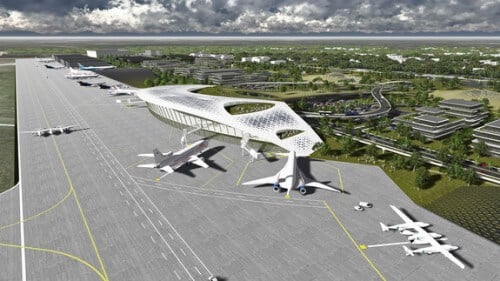Launches from the Ellington Spaceport in Houston will be limited to aircraft that can take off and land like an airplane. "Not all launches into space are required to be vertical," explains Houston Mayor Ennis Parker

The Houston airport, where all the astronauts passed through when they left for training at the Johnson Space Center, now hosts a commercial spaceport.
The Houston Airports Authority announced on June 30 that it received a license from the FAA - the Federal Aviation Agency, which allows Ellington Airport near the Johnson Space Center to be the tenth to receive such a license in the US. Ellington is an airport for private flights and domestic American flights - the international flights land at the George Bush International Airport north of the city of AB). Houston is of course linked in the public mind to space thanks to the control center located there and since the days of Apollo, the astronauts have been making communications from space on behalf of the city.
The other nine ports are Korn Ranch in West Texas, Jacksonville in Florida, Kodiak in Alaska, Mid Atlantic Spaceport on Wallops Island off the coast of Virginia, Mojave, Oklahoma, Spaceport America in New Mexico, and Rickenbacker near Columbus, Ohio.
But the one in Boston is unique due to the city's history in space missions. "We have a first-class airport system that connects Houston to the rest of the world. We want to ensure that Houston's airport system plays a part in connecting Houston to space," says Houston Mayor Ennis Parker, who adds that "the license gives Ellington the opportunity to host a number of activities in the field of space, from launching microsatellites to manufacturing spacecraft."
Launches from the Ellington Spaceport in Houston will be limited to aircraft that can take off and land like an airplane. "Not all launches into space are required to be vertical," the mayor explains. "We can launch horizontal launches and over time this is the direction in which the space industry is moving."
The Sierra Nevada company whose private Dream Chaser spacecraft takes off vertically but lands horizontally signed earlier this year with the Houston Airports Authority to use the field as a landing site. The company offered the Citrus Chaser to NASA so that it would be used as a spacecraft to launch supplies to and from the space station.
At the same time, Intuitive Systems, which is developing a spacecraft capable of landing scientific and engineering equipment from the space station, announced that it would make Ellington its home port.
Other spacecraft that both take off and land horizontally have been developed for space tourism, including Virgin Galactic's Spaceship 2 and XCOR Aerospace's Lynx.
"I am convinced that in the coming years we will see many companies offering suborbital flights on a regular and regular basis," says George Neild, FAA Assistant Administrator for Commercial Space Traffic. "It won't be long before we see several suborbital flights per week, and perhaps eventually one or more launches per day."
Making Ellington a spaceport has been supported by NASA, says former astronaut Ellen Ochoa. Ellington already hosts a fleet of about 25 planes of the agency, including the T-38 training plane for astronauts, and hangar and office areas.
